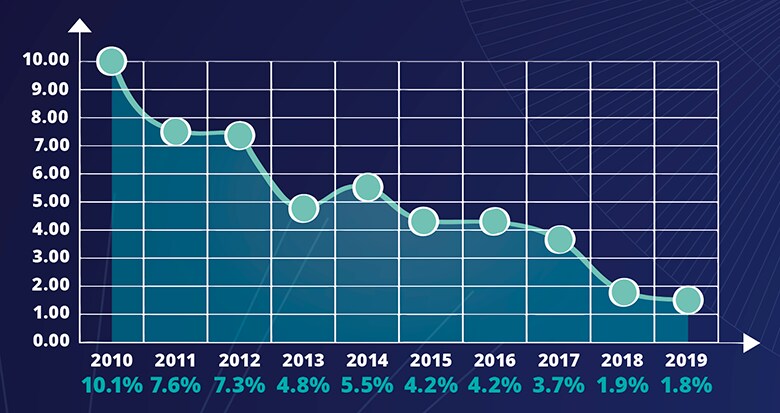The past decade has seen increasing pressures undermine the productivity of biopharma R&D, leading to a decade of decline in the return on investment. At the same time, innovative new treatments are changing the face of disease management. New treatment modalities and an increasing understanding of precision medicine have led to the need for new R&D models and a future where medicine is more participatory, preventative and personalized.
A decade of decline and transition
While biopharma companies continue to develop increasing numbers of innovative life-enhancing and life-saving therapies, the cost of paying for these treatments has come under increasing scrutiny from payers, providers and patients.
The changing prevalence of chronic diseases have increased the demand for new therapies while scientific advances in areas such as genomics, have highlighted their potential as a cost-effective, affordable alternative. At the same time, constraints around market access and pricing, changing patterns of demand and continuing downward pressure on health care budgets, have presented the industry with a volatile and highly uncertain economic environment in which to operate, let alone drive productivity improvements.
Measuring the return from pharmaceutical innovation
Analysis from the first nine years of our Measuring the return from pharmaceutical innovation series concluded that a transformational change in R&D productivity is required to reverse declining trends in R&D returns across the biopharma industry. Analysis from this, our tenth report, shows that this conclusion is still true today.
Key findings for top 12 biopharma companies:
- R&D returns have declined to 1.8 per cent - a slight decrease of 0.1 per cent from 2018. This represents an average decline of 0.83 per cent per year.
- The cost of bringing a drug to market decreased from $2,168 million in 2018 to $1,981 in 2019.
- This year, the average forecast peak sales per pipeline asset fell below $400 million for the first time, to $376 million in 2019, down from $407 million in 2018.

The future of biopharma innovation
Biopharma’s future will be in creating highly individualized treatments that target specific needs and even specific patients. Developing these treatments will bring even more challenges than developing traditional therapies. Already, biologics are proving more expensive and time-consuming to develop and get approved, and inherently generate less revenue as they target smaller groups of patients. Traditional small molecules will not be completely replaced any time soon, but as next gen therapies bring about personalized medicine, biopharma will need to adapt its business and operating models to continue to drive innovation.
Webinar: The Future of Biopharma – Predicting the forces that will shape the Biopharma industry
Join the authors of the report on 25 February for an exclusive webinar as we review this year’s findings and discuss the trends that have shaped the industry over the past decade.
We will also explore the disruptive forces that could impact the industry in the years ahead and the innovative solutions companies might adopt to overcome them.
Date: 25 February 2020
Time: 15:00 - 15:45 (GMT)

